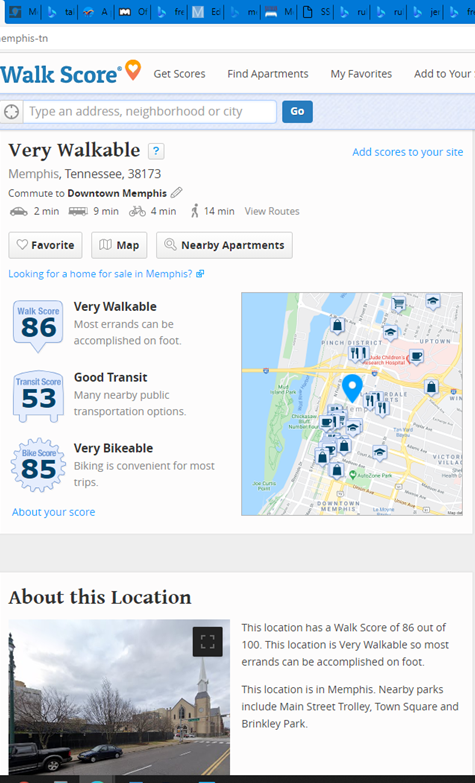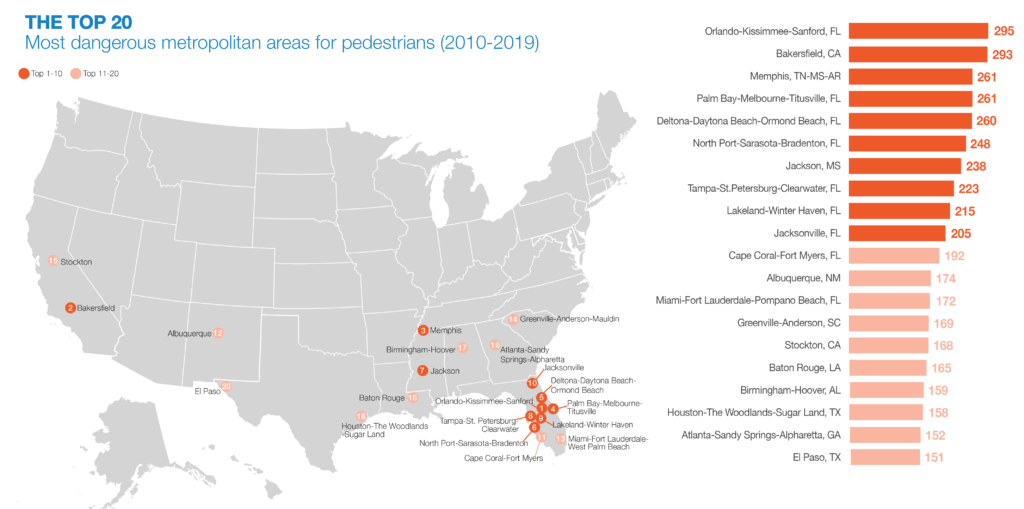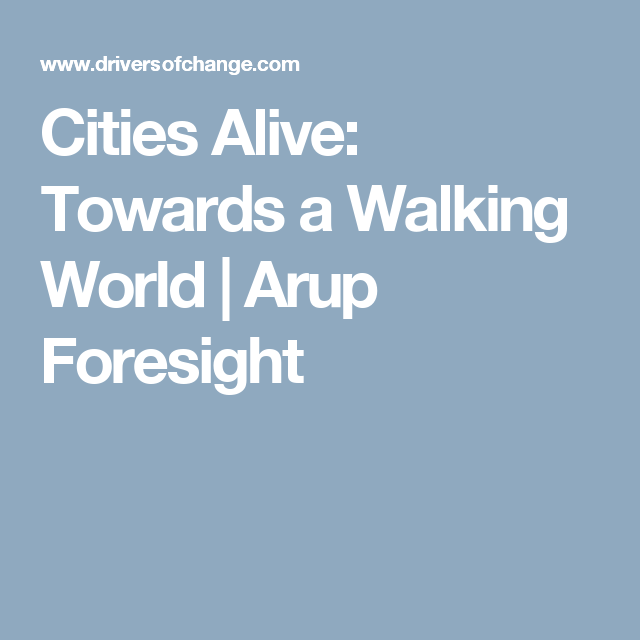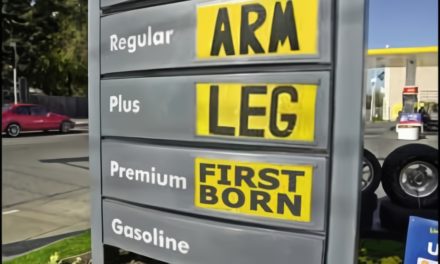Thumbnail: A successful downtown hinges on its walkability, and a complaint about removing 62 unsafe parking spaces from Riverside Drive is merely a distraction from a real discussion about equity.
**
It’s often hard to translate policy into practice.
That’s especially true when it comes to making Memphis walkable rather than car-centric.
City planners are doing a lot but they can only do so much. They need support of boards like the Land Use Control Board, EDGE, and Board of Equalization, and governing bodies like Memphis City Council.
In particular, the reticence to follow recommendations in City of Memphis study after study calling for cars to be last when it comes to city priorities – after pedestrians, bicycles, and public transit – needs to be replaced by an understanding of the successful city these reports would create.
That’s what makes the debate about parking spaces on Riverside Drive adjacent to Tom Lee Park so misdirected – if not manufactured. After all, capitalizing and strengthening the competitive advantage of a walkable downtown, including the new and long-awaited connections between the riverfront and downtown, should be at the top of everyone’s priority list.
How Many Times Does It Have To Be Said?
Memphis 3.0 describes downtown as the “walkable anchor for the City of Memphis.” A theme of the Mid-South Regional Greenprint whose development was led by City Hall planners is walkability. The Build Downtown: The Downtown Master Plan calls for policy makers to “celebrate walkability” and calls for improved “pedestrian connections west to Tom Lee Park and the Riverwalk to provide better access to the waterfront.”
The City of Memphis Complete Streets Plan says: “70% of adults want more facilities for non-motorized travel. Building sidewalks reduces pedestrian risk by 88%. 50% of all metro trips are shorter than three miles and many are under one mile; these are bikable and walkable distances. People without cars make twice as many walking trips.”
Meanwhile, Memphis Downtown Commission has touted the walkability of downtown which likely influenced developers to change the name of Union Row to The Walk, a $376 million project in its first phase. The Downtown Commission also features 13 walking tours by the inimitable Jimmy Ogle and points out that its Facebook page features walking tours by Robert Hamilton.
In addition, the Commission’s Mobility, Transportation, and Walkability page on its website extols the virtues of the walkable downtown. “Downtown Memphis is a vibrant, dense, and highly activated area with the highest walkability score in the region,” the website says. In support of a walkable downtown, the Commission just launched a new grant program to repair downtown sidewalks.
A Distraction
And yet, the number of free parking spaces on Riverside Drive is what has drawn the attention of some City Council members, based on a complaint that is but the latest from a fabulist with an insatiable desire for media attention for his run for City Council.
It’s all despite the fact that City of Memphis COO Doug McGowen says the parking plan adheres to the terms of the mediation agreement between City of Memphis, Memphis in May, and Memphis River Parks Partnership. The mediation agreement is the Bible for Tom Lee Park.
It’s a peculiar discussion, particularly that it’s cast in terms of equity when there is not even a good sidewalk connecting the riverfront to the families of South City.
There are plenty of real equity issues in Memphis. There are the tax freezes handed out to companies that pay less than a living wage – $13 a hour – while Memphis’ income growth trails its peer cities badly. There’s the need for more funding for the Housing Trust Fund. There’s the largesse for developers building apartments in Midtown and East Memphis and the need for a tax incentive program to support development in disinvested neighborhoods. There’s the need for a web of programs to reduce the child poverty rate, second highest in the U.S. (Memphis is #5 in overall poverty rate). There’s funding needed for MATA so more Memphis low-income families aren’t forced to buy cars, which gobble up more than 25% of their incomes, according to the Center for Neighborhood Technology and the data in BLDG Memphis’ Walkability Toolkit make a case for how efficient public transit can be a lifeline to more disposable income.
In other words, there are plenty of pressing equity issues that need to be addressed, but some people would rather that City Council takes its eye off the ball by focusing on 62 parking spaces eliminated in the plan for Tom Lee Park.
What About Unsafe Don’t You Understand?
“Cars are not the problem. Cars moving quickly near pedestrians are the problem…Build Memphis for humans, not cars,” said Jeff Speck, urban planner, architect and author of best-selling book, Walkable City: How Downtown Can Save America One Step at a Time in his “12 Modest Suggestions for Making Memphis Great.” Waterfront environments “only thrive when they are a pleasant walk from the heart of downtown” and Riverside Drive is “a surface road that has been allowed to become a highway,” he said in 2008, “and it needs to “take on urban rather than highway characteristics.”
This brings us to the 62 parking spaces on the eastern side of Riverside Drive. They were eliminated because of concerns about safety on what Mr. Speck accurately calls a four-lane highway.
The issue is easy to understand. In fact, it’s common sense. If there were parking spaces on the eastern side of Riverside Drive, it would require families to cross four lanes of traffic on a highway where engineering studies have shown drivers exceed the posted speed limit in a city that ranks #3 in the most pedestrians killed in traffic between 2010-2019. There are 68 spaces on the western side of the street immediately adjacent to the park.
The contention is that the 62 parking spaces removed from Riverside Drive is an equity issue, and yet, low-income families have no priority over the parking spaces in the first place. And they’ll likely be competing with downtown workers and residents who can get to the spaces early and leave their vehicles there all day because the spaces are free.
As for equity, the reimagined Tom Lee Park will feature the first ADA entrance and walkway from the bluffs to the riverfront. It will be at Vance Avenue, which means the MLGW’s garage with its more than 1,000 parking spaces is two blocks away. Overlooked in this discussion is the fact that the improved entrances up the bluff open up about 20 blocks of unmetered street parking. At about the time the new park opens, one more block away will be the Downtown Mobility Center with almost 1,000 parking spaces.
In addition to the hundreds of unmetered street parking spaces are those that have meters and cost nothing on Sundays – the park’s busiest day – and are free after 6 p.m. in the CBD, according to City of Memphis COO Doug McGowen. To listen to the source who drummed up this controversy, you’d think these parking spaces are on Mars, and while casting himself as downtown advocate, he ultimately attacks downtown’s reputation as a walkable neighborhood.
More to the point, the reimagined Tom Lee Park is itself an exercise in equity. First, it will be one of the most spectacular riverfront parks in the U.S. Second, the diversity of the people enjoying the riverfront parks reflects the diversity of Memphis itself, including many people from the low-income zip codes that surround downtown and where 90% of the people support Tom Lee Park’s improvements. And third, and most importantly of all, the park will be free.
Overcoming Amnesia and Lethargy
Here’s the thing: it’s hard for some people to shake Memphis’ old way of thinking – the notion that downtown should be like the suburbs or a town in Arkansas: that we should be able to drive up to the front of our destination, park out front, and walk in.
It requires a bout of amnesia to forget we don’t do this when we go to other cities. When we visit the riverfront park in Cincinnati, we pay to park and walk to the riverfront. It’s the same thing in Louisville, where the best experience is to park a couple of blocks from the river in downtown and walk over. And that’s certainly the case in Chicago and New Orleans and common at Nashville and Chattanooga’s riverfront parks.
When we visit other cities, all of us routinely park our cars and start walking, and it’s in seeing others doing the same thing that we judge a downtown to be vibrant, active, and appealing.
City Council members who believe that paying to park at city meters is inequitable actually have an option: they have the power to develop an affordable parking program. In fact, that’s recommendation #5 in the Downtown Parking Plan. Come to think of it, they could also create a free MATA pass program for people traveling to riverfront parks.
Downtown’s master plan calls for high-impact pedestrian improvements that “promote access to the riverfront” and recommends comprehensive tree planting “enhancing (the) comfort and attractiveness of walking to the riverfront.”
It describes the vision for downtown this way: “A network of walkable, tree-lined Signature streets will connect a series of reimagined parks and public spaces, including the dramatically transformed Mississippi riverfront. Improved transit will connect all of Memphis to Downtown and make it a place where residents can live ‘car-light’ or ‘carfree’ if they wish. These improvements will reinvigorate Downtown’s role as the heart of the region – and make it a true common ground for Memphis’ diverse community.”
It’s About Walkable Cities, Stupid
One thing is undeniable: there is a dominant principle in planning and urban policy today that guides “cities that work.” It is that they are walkable.
Just ask Opera Memphis. It announced last week it’s moving from its location in deep East Memphis. One of the problems: the area’s just not walkable.
The global engineering firm, ARUP, wrote in a widely circulated article, Cities Alive: Towards A Walking World: “Mobility is intrinsic to the quality of life experienced in cities. But for the past century, the car has dominated how we plan and grow our urban areas. We must now seize the opportunity to place people back at the heart of our cities and drive a human-focused approach to the design of the built environment. With a growing desire to create more livable streets, walkability should be used as a catalyst for developing sustainable, healthy, prosperous, and attractive cities.”
It’s the reason that walkability is a prevailing theme in so many City of Memphis reports; however, it won’t be accomplished without every city official doing whatever they can to make the city described in these City Council-approved reports a reality.
Some of the best things about a walkable downtown are that it improves our county’s troubling health outcomes, supports retail and restaurants, reduces CO2 emissions and improves air quality in support of the Memphis Area Climate Action Plan, and it benefits tourism. In addition, walking’s benefits cost city government very little when compared to cars.
As for Fast Company, it says there are “50 Reasons Why Everyone Should Want More Walkable Streets” – “from making you live longer to making cities more resilient.”
The Closing Argument
At last week’s Memphis City Council parks and environment committee meeting, Councilman Chase Carlisle summed all of this up especially well:
“We designed and elevated this park to increase park participation and connect the river to downtown. One of the most important things when we talk about neighborhoods is to look at more than a block. If we want to benefit people, if we want to benefit small businesses that are downtown. We want people to park at the downtown Mobility Authority. We want them to park at the MLGW garage. We want them to walk by restaurants. We want them to walk by retailers. We want them to walk because because it’s a healthy exercise.
“We want to get outside of the mentality that we have to drive up to a storefront like it’s a Wal-Mart parking lot, park in the first spot, and walk the shortest distance. We want to enjoy our vibrant downtown and our once-in-a-lifetime riverfront…I would implore the Council to think in of it in a broader context as to what the park can do from an economic aspect for small businesses in the downtown area.”
***
Join us at the Smart City Memphis Facebook page for daily articles, reports, and commentaries relevant to Memphis and the conversations that begin here.







